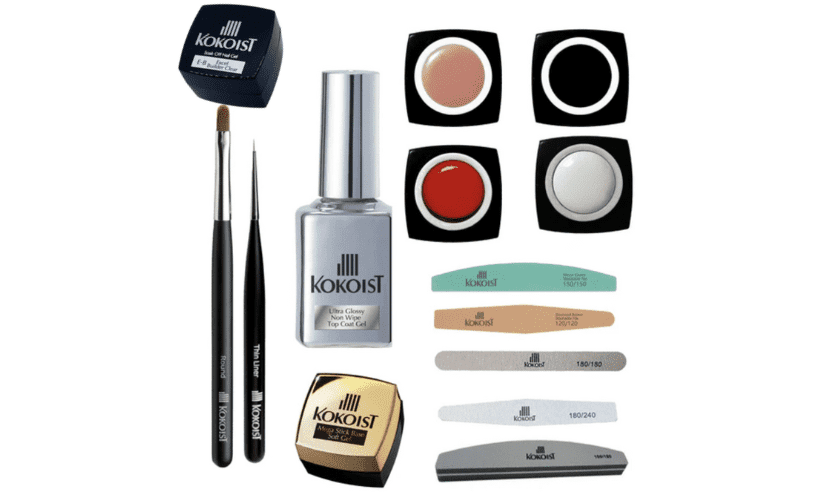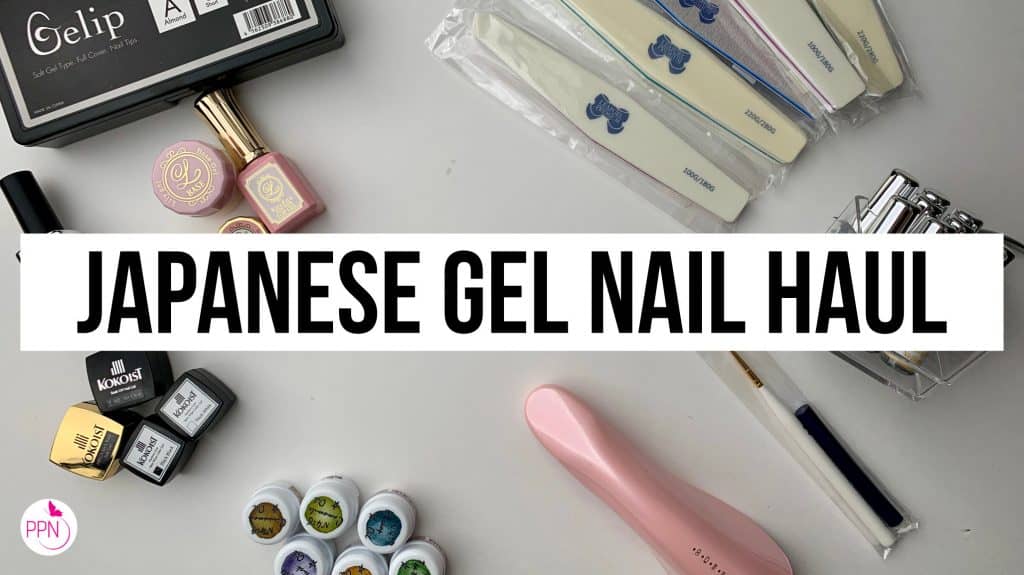Welcome to our 1st Episode of the Japanese Gel Fundamentals Series, and I mean FUNdamentals. Fun intended.
In this series, you can expect to learn all about the WHY of Japanese Gels and the How-to for troubleshooting common nail tech issues using Japanese Gel.
Since announcing the start of this series, a few of you have asked if this will be like MGN, my online program, and the answer is No.

In MGN, I take you by hand through my exact application method for all of my salon services.
In other words, I take you step-by-step through my Japanese Gel Overlays, extensions, and nail art application technique. So if you’re already in MGN, this will not be that kind of learning; it will be more supplemental.
If you’re new to this channel, all of the upcoming episodes of this series will guide you into what Japanese gel is and why it’s been such a game changer for me and almost 300 other students who’ve already made the switch.
By the way, MGN stands for Master Gel Nails, and at the end of most episodes of this series, I’ll briefly take you through a quick breakdown of what the program is all about.
Today, we will be answering the big question of…
How are Japanese Gels different from other gels?
I will give you five defining characteristics of Japanese Gel that make it stand out from the crowd!
So grab a sip, pen, and paper and cozy up to this 1st lesson… I’m so excited to get started!
The first Characteristic that makes Japanese gel different from other gels is that…
#1 Japanese gel is typically soak-off gel offered in pots (or jars).
At least for us in the states, before the popularity of Japanese Gel, we equated potted gel to mean it was hard gel. And except for Presto’s builder gel, that is generally no longer true. Every brand of Japanese Gel I’ve ever worked with has been soak-off; by soak-off, I mean that you can dissolve your gel nails with acetone to remove them from your natural nails. To remove hard gel from your natural nails, you need to file it down thin and let it grow out from your nails.

That is not to say that Japanese soak-off gel cannot be filled in and has to be ‘soaked off’ every time. A Japanese soak-off gel builder allows you that convenience also.
On a bit of a side note, ‘soak-off gel’ and ‘soft gel’ are, for the most part, still synonymous. Recently with the introduction of builder-in-a-bottle products, we’ve needed to specify where these types of gels fall concerning their texture and feel. Know that tinted builders in a bottle are soak-off gel with a semi-hard texture.
And for the big question of whether pot or bottle. I’m a potted gel girl all the way! Unless it’s a pedicure, I am reaching for my bottled foundation gels and colors.
So to recap. Typically all Japanese gel is primarily potted, soak-off gel with a primary texture of soft and semi-hard finishes. Both of these textures in Japanese Gels are flexible, which is why they work exceptionally well on the nails. A soft gel texture will be bendier, while a semi-hard one will be more rigid.
#2 Japanese Gel is a do-it-all system.
First, I want to define a “system” in nails. A system can usually refer to a broad category of product types. Under the broad category, there are also sub-systems.
Japanese gels fall in the broad category of Soak-Off Gel (and remember what we learn earlier… we can also say soft gel). So you’ll often hear me say Japanese -soft gel- systems vs. Japanese -soak-off gel- systems because it rolls off the tongue a little better.
Let’s take a broad category ‘system’ like acrylic. Technically, EVERY product in nails has some form of acrylic, by the way, including nail polish. So when we say acrylic nails, we really are referring to liquid and powder nails. That is not where I’m going with this conversation, but all nails are a form of plastic-material enhancement.

So again, acrylic nails are a broad category, but they can also have a subcategory like… “dip nails.” Dip nails are fine acrylic powder adhered or cured onto the nail with resin in the form of glue or gel.
Now to my point, it is a common misconception that you cannot use soft gel, AKA soak-off gel, to build extensions. Oh yes, you can friends. Hear me out.
Japanese gel brands offer strong builder gels that you can use to extend the natural nails. Vetro’s is even considered to be construction-grade; it is that strong. I’ve tried all the ones from my favorite brands, like Kokoist, Leafgel (you can use code PPN10 for a 10% discount at Kokoist and Leafgel ;)), and Vetro, which are so strong. I’m talking I’ve built free-form extensions with them.

AND BY THE WAY, you can do it all w/o a separate dehydrator or bonder bottle. Additional dehydration agents like these are not required for long-wearing gel nails! So when you’re shopping, there is no need to search for these. They won’t be there. All of the bonding agents are found in each brand’s base gel.
So to summarize… Yes, you can do it all with Japanese soft gel systems. Manicures, structured natural nail overlays, free-form extensions, and many nail art styles. There is no need to learn everything in the scope of nails; the more specialized, the easier you’ll be to attract your clients and charge premium pricing. If you haven’t already. Check out my Free training in the description box below to learn exactly what I mean.
#3 Fewer dilution ingredients, like monomers.
Let me ask you this, Have you looked at the price of Japanese Gel? It is typically on the higher end… and so many people get caught up with that. But here is one of the reasons why that is the case. Often Japanese Gel Nail brands work with raw materials from scratch.
Have you ever been to a restaurant and had the waiter tell you, Oh, Hey-by the way, we’re a scratch kitchen… and you’re like… OK, what does that mean? Well, it means that everything they make for you is made in-house. Dressings, soups, sauces, etc… They don’t buy those dressings and soups, and sauces already premixed; they mix them and serve them in-house.
In much the same way, top Japanese gel nail companies work from raw resins (AKA the main component of gel) and mix in monomers, photo-initiators, pigments, and whatever else their custom mix requires. For this reason, Japanese Gel Nail Companies are highly competitive. You may see the bare minimum info required by law in their Materials Safety Data Sheets because most are proprietary blends or custom mixes.
So let’s put it all together, the fewer dilution agents like monomers, the more resin (or gel) material you get. This is why your gel nails, even after six weeks, still look good because you have more of that gel material and less dilution agent. And the price of Japanese Gel usually reflects that you are paying for gel, not monomer!

Now keep an eye out for monomer concentrations exceeding 20%. Exposing yourself or clients to concentrations higher than that can make you allergic. 2 popular monomers causing issues with allergies when in a concentration higher than 20% are HEMA and ethyl acetate. I did a video on this topic a little while back, so check it out if you want to learn more about it.
#4 Japanese Gel is produced in small batches.
This allows for maximum quality control. Now because of small production, companies are often unable to slash costs significantly because they are not essentially getting their quality raw materials at super cheap bulk prices.
So, for example, the less amount of something there is, the more expensive it will be, according to the law of supply and demand, right? Now you may be saying, great, if there is demand, let’s just buy and produce more and lower the cost. Well, it is not that easy.
If a company cannot manage the demand, then the quality of its products may go down. Small batch allows for maximum quality control.
One of my favorite Japanese Gel companies sort of found a solution to this by not only producing in Japan but actually owning that production company and bottling their gels here in the U.S. I want to know how you feel about that concept, Made in Japan, bottled in the U.S. Let me know in the comments section.
#5 Just about every Japanese Gel brand offers training.
Ok. This last characteristic of Japanese Gel, I think, is my favorite of them all, and it really sets it apart from the competition… and that is the education offered behind their brand.
I want to be clear, their products are for professional use, but a license is not required to buy them. I’m not totally opposed to this because their products are responsibly made, generally non-toxic, and hypoallergenic. But the fact that most offer a curriculum for those who want to go the extra step to ensure proper use and extended wear is a big plus for me. This is one of the reasons why I initially became such a fan of Japanese Gel!
If you’d like to sign up for my next brand certification training, pick up a free resource on the brand you’re interested in, and I’ll also send you a class update once available. I offer these certification training online so that everyone from anywhere can join, and they are both fun and intense.
Here you have five characteristics of what makes Japanese gels different than other gels. All 5 of these characteristics have kept me and my community hooked and allowed us to grow viable businesses with the combination of premium prices, products, and education. Our clients can only rave and come back for more TLC.
Thank you so much for joining me on this 1st episode of our Japanese Gel Fundamentals series. I mentioned earlier that I’d tell you about my online Japanese Gel Nail education program. Check it out, and I’ll see you again soon for Episode #2 of this Japanese gel fundamentals series, where we’ll discuss what items to buy when getting started with Japanese Gel. Bye for now.
Loved this blog? Then I think you’ll love learning more about my journey as a specialized gel nail solopreneur in the nail industry. Click here to get instant access. These blogs are copyrighted material, and any use of this blog is not permitted without written concern first. Some of these blogs contain affiliate links that give us a small commission when qualifying purchases are made. Thank you for your support that helps us to continue creating valuable resources and content like this.


![[[ Nail Thoughts X Kokoist ]] Bottled Gel Launch | All COLORS SWATCHED](https://paolaponcenails.com/wp-content/uploads/2020/11/ntswatchesnewthumb-1024x575.jpg)